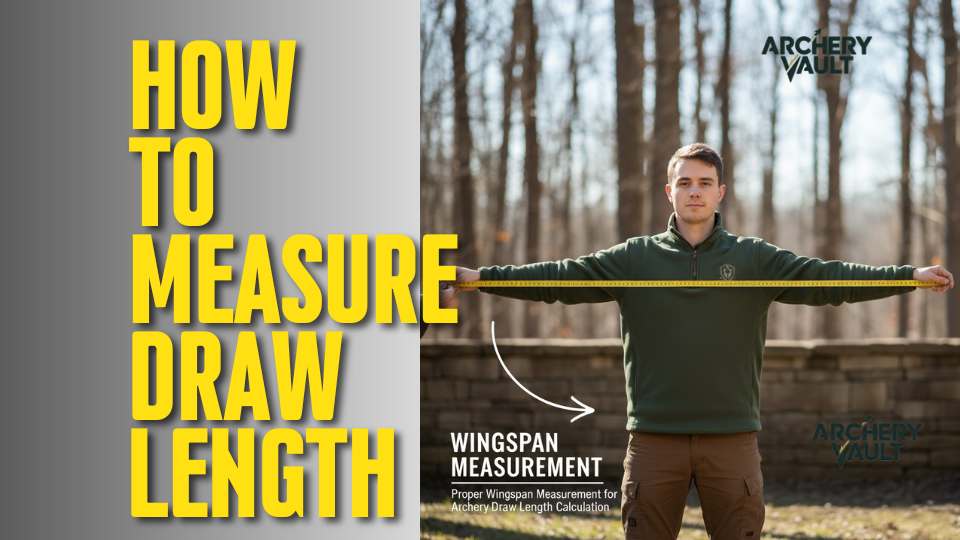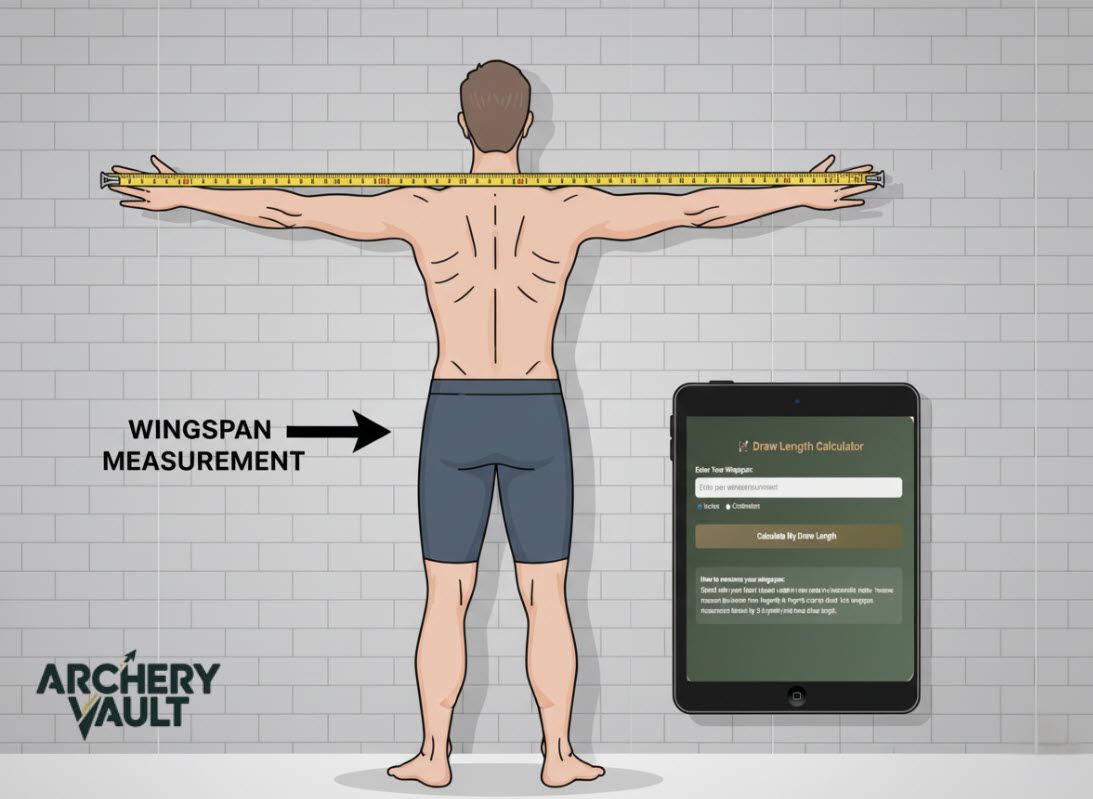In this article, you’ll learn how to measure draw length accurately using wingspan, arm extension, and actual draw methods. Your draw length is either right or it’s why you can’t figure out why your arrows are all over the target. I’ve seen so many guys blame their release, their sight, their arrows – literally everything except the fact that their bow doesn’t fit them.
Here’s how to actually measure it without making the same mistakes everyone else does.
How to Measure Draw Length: Key Takeaways
- Wingspan divided by 2.5 gets you in the ballpark for most people
- Arm extension method works solo but it’s less accurate
- Actually measure what you’re doing with your bow, not just what math says you should be doing
- Keep your arms straight and don’t hunch – sounds obvious but everyone screws this up
- Draw length determines what arrows will even work, so get this right first
- Most compound cams adjust pretty easy once you know what you’re looking for
- Start with the formula then tweak based on real shooting
- Our Draw Length Calculator does the wingspan math if you don’t want to pull out a calculator
What Draw Length Actually Means
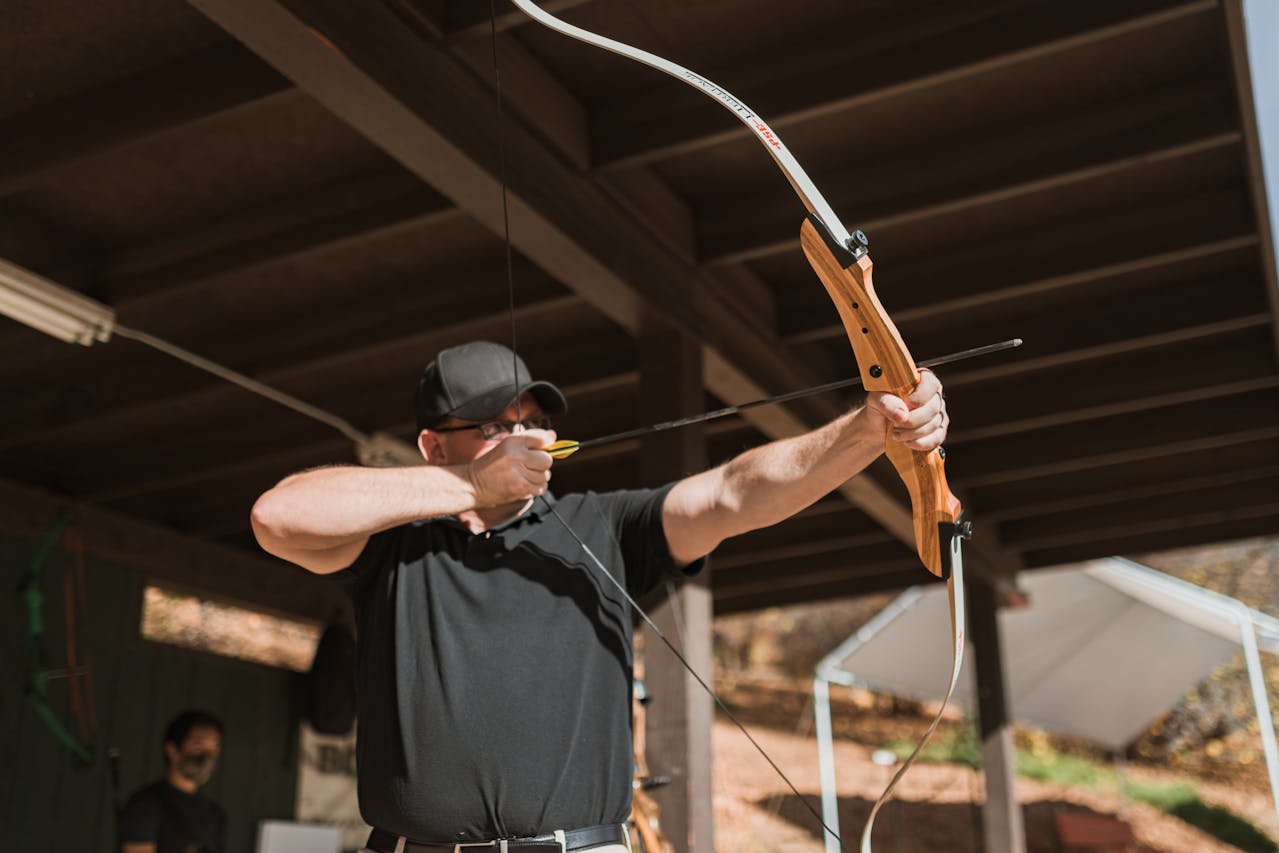
It’s the distance from your nocking point to the deepest part of your grip at full draw. Simple as that.
The reason it matters so much is everything else in your setup builds off this number. Arrow spine, cam timing on compounds, where you anchor – all of it. Get draw length wrong by even an inch and you’re compensating for bad fit on every shot. Your form suffers, accuracy suffers, and honestly your shoulder probably hurts after a while.
I had a buddy shooting a 30″ draw length for two years because that’s what the guy at Cabela’s set him up with. Turns out he needed 28.5″. Once we fixed it his groups tightened up immediately and he stopped complaining about shoulder pain. Sometimes it really is that simple.
Wingspan Method Works Best
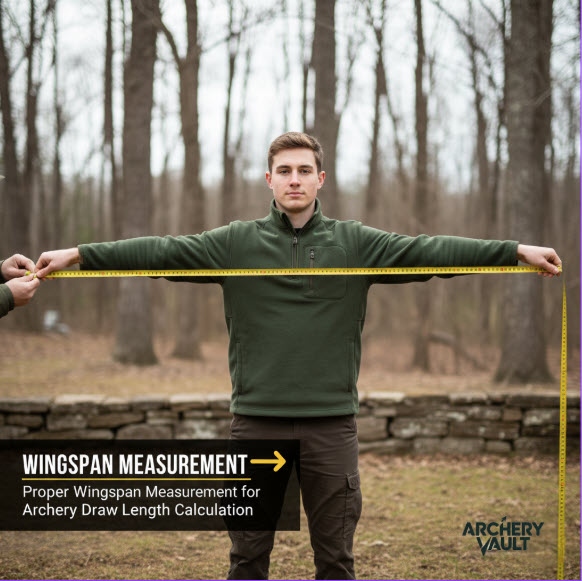
Stand against a wall, arms out to the sides at shoulder height. Keep everything straight – no bent elbows.
Have someone measure fingertip to fingertip. Middle finger specifically. Write it down.
Divide by 2.5 and that’s your draw length. So 70 inches wingspan = 28 inch draw. Round to the nearest quarter inch if you need to.
This method works because the ratio stays consistent across different builds. Doesn’t matter if you’re 5’6″ or 6’4″, short arms or long torso – the wingspan-to-draw ratio holds up. I’ve measured probably a few hundred people at this point using this method and it’s accurate within a half inch for like 95% of them.
Don’t feel like doing division? Our Draw Length Calculator up there handles it automatically.
Arm Extension If You’re By Yourself
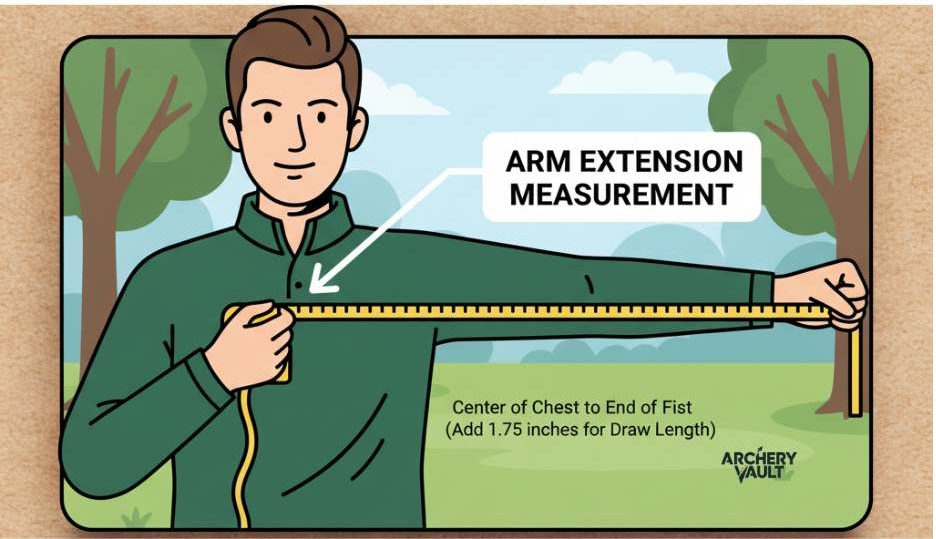
Sometimes you don’t have anyone around to help with wingspan. This works okay for a rough estimate.
Stand normal, bow arm straight out to the side. Measure from center of chest to the end of your fist. Add 1.75 inches.
Not as accurate as wingspan but gets you close enough to know what size range you need. Within a half inch usually.
Measuring Actual Draw on Your Bow
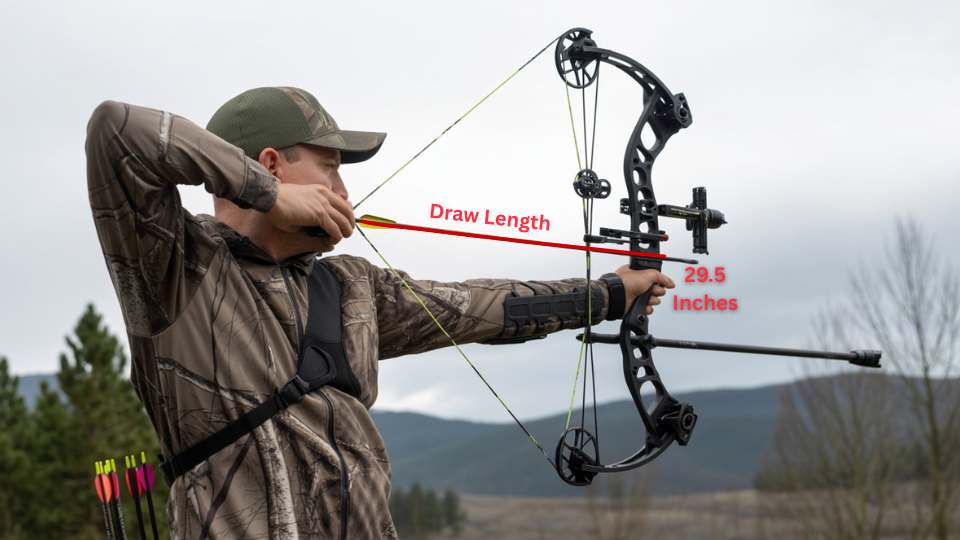
If you’ve already got a bow, measure what you’re actually doing. Nock an arrow, draw to your anchor, have someone measure nocking point to the grip’s pivot point.
This shows reality instead of theory. Maybe you anchor different than most people or your form has some quirk. This measurement tells you what’s really happening.
Only problem is if your bow’s already set wrong, you’re just measuring how you compensate. That’s why I like to compare wingspan calculation against actual draw – if they’re way different, something’s off.
Common Screwups
Bent elbows during wingspan. Every single time. People swear their arms are straight and they’re not.
Rolling shoulders forward is the other one. Stand natural against the wall – don’t try to stretch farther by hunching.
And yeah, guys fudge toward longer draws because they think it means more power. It doesn’t work that way. You end up overextended, can’t hold steady, anchor point moves around. Just measure honestly.
Adjusting Your Bow
Most newer compound bows adjust through the cam system. Some you rotate modules, some you swap them out. Check your manual for your specific bow’s range.
If you’ve never messed with cams before, maybe find someone who has. It’s not rocket science but you can screw up cam timing if you don’t know what you’re doing. I’ve seen Mathews bows where the modules just rotate – super easy. PSE and some others require actual module swaps which is more work.
Recurves don’t adjust. You’re working with what you’ve got – mainly arrow length and finding where you naturally anchor.
Why Arrow Selection Depends on This
Longer draw length = more stored energy = you need stiffer spine. Shorter draw = less energy = more flexible spine needed.
Get spine wrong and arrows fly sideways no matter what. The arrow flexes leaving the string (archer’s paradox if you want to google it) and proper spine makes that flex work with your setup instead of against it.
You also need arrows at least an inch longer than your draw length. Safety thing mostly but it affects flight too.
How It Changes Your Shooting
Right draw length means consistent anchor points. That’s where accuracy comes from – being able to repeat the exact same motion every time.
You’ll see tighter groups immediately once it’s right. Not because you magically got better but because you’re not fighting equipment anymore.
There’s also the injury prevention angle. Wrong draw length stresses your shoulder weird. Too long and you’re hyperextended. Too short and your wrist angle gets funky. When it’s right everything sits naturally.
Fine-Tuning After Initial Measurement
The calculated number gets you close but you might end up adjusting a quarter inch either way after shooting. That’s normal.
Watch where you naturally anchor. If you keep pulling past your anchor point or stopping short, listen to what your body’s telling you.
Test at different distances too. Sometimes what feels good at 20 yards shows problems at 50. Shoot at the ranges you’ll actually use.
When You Need Help
Sometimes you just need someone experienced to watch you shoot. They can spot form issues or measurement problems you’d never catch yourself.
They’ll verify measurements multiple ways and figure out if problems are really draw length or something else like grip pressure or release timing.
Worth it if you’re struggling. Better than buying different bows trying to fix what’s really just a setup issue.

